Over 250 CEOs Pledge More Inclusion in the Workplace
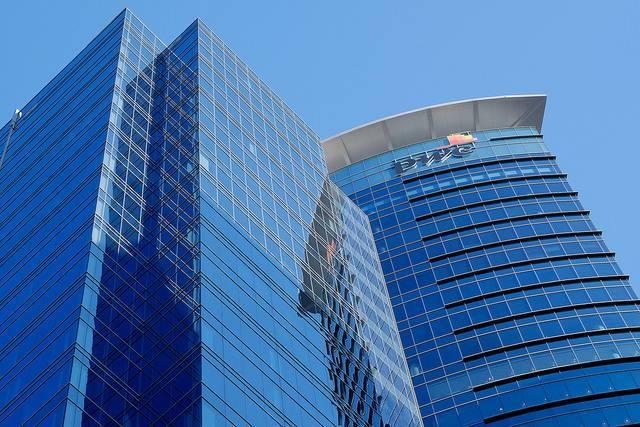

Companies have long touted their diversity and inclusion programs, but the statistics have shown that the higher one wants to advance in a company, the more impenetrable that stubborn glass ceiling can be. The result is not only frustrated and disengaged employees, but a recent study has suggested that any sort of bias in the workplace can hurt companies' ledger sheets.
To that end, over 250 CEOs have committed to the CEO Action for Diversity and Inclusion pledge. The initiative launched earlier this summer with 150 company chiefs signing on. Since then, interest in the program continues to surge with more CEOs signing on ever day. Companies participating in CEO Action represent scores of industries, and the A-to-almost-Z roster includes noted brands such as Alaska Airlines, Kroger and Xerox.
According to this initiative's organizers, this plan is not just about talking points, but is backed up with real action. Examples of how companies are putting themselves out there in a move to attract and retain key talent are all over the map. In Silicon Valley, long criticized for its male-dominated "bro culture," various Bay Area giants are stepping over each other trying to stand out in this diversity and inclusion race.
Cisco, for example, has pledged a pay parity program that guarantees salaries are fair and equitable for all of its employees. Adobe has made moves to ensure a more diverse workforce in the future by launching a "digital academy" that will offer potential women and minority candidates educational opportunities for careers in web development. And HP Inc. and Hewlett Packard Enterprises insist they have two of the most diverse boards of directors in the U.S. Those companies are following the lead of technology trailblazers such as Symantec, which last year harnessed the Black Lives Matter movement as an opportunity to show employees how they can be allies on racial issues.
The professional services sector is also developing tactics to demonstrate a commitment to diversity and inclusion (now known as D&I), and some are even going "open source" in sharing these tactics with other companies. Big 4 titan EY has managed a microsite for over two years that shows real-world inclusion examples - across the globe - and how they benefit the organization. In an effort to demonstrate to its employees that a firm can be supportive of its employees during difficult times, Deloitte has expanded its leave program that offers up to 16 weeks of paid time off in the event a staff member has to take care of an ill family member. Meanwhile, PwC tells us it has been proactive in recruiting U.S. military veterans through a recruitment and training program.
The reaching out to all communities of all backgrounds take different forms. Viacom, which owns Paramount Pictures, describes itself as a "trans-inclusive" employer. The media conglomerate has supported the Los Angeles LGBT Center’s Transgender Economic Empowerment Project for several years. Other firms, such as PwC, have started lesbian, gay, bisexual and transgender (LGBT) advisory boards, which offer a venue for these employees to share ideas on issues such as improving diversity planning and strategy.
Academia is hardly immune from bias in the workplace despite its reputation for being a bastion of political correctness. To that end, the University of Baltimore County (UMBC)* has developed what it describes as a "rigorous faculty diversity hiring protocol" to ensure all candidates have a fair shake during the recruitment process. The suburban Baltimore campus, which during the early 1990s distributed pink triangle stickers that faculty and staff could affix to their doors implying LGBT students had a "safe zone," has also organized affinity groups where faculty members of various backgrounds can meet, commiserate and find ways to make the 14,000-student campus a welcoming place for everyone.
CEOs who have made their businesses signatories to this initiative say an even more inclusive environment - and even approaching controversial racial issues head-on - is in the best interest for both companies and their employees. In a public statement last month, Tim Ryan, U.S. Chairman and Senior Partner of PwC said, "We are living in a world of complex divisions and tensions that can have a significant impact on our work environment. Yet, it's often the case that when we walk into our workplace – where we spend the majority of our time – we don't openly address these topics."
Image credit: Sean Davis/Flickr
*Disclosure: The author is a graduate of UMBC.
7 Billion Tons: Latest Tally of Global Trashed Plastic
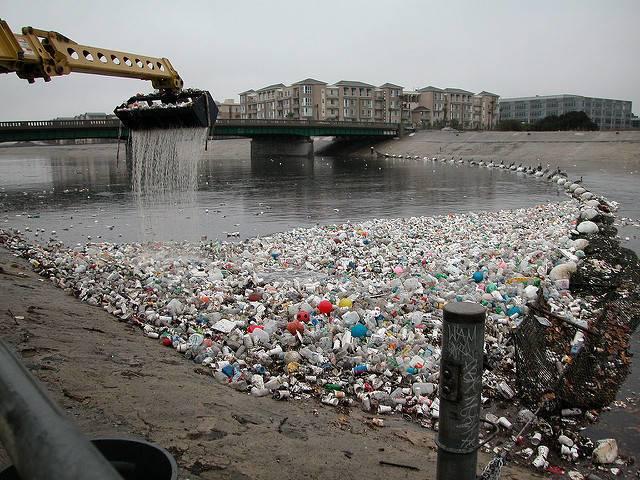

In 1960, less than 1 percent of municipal waste by mass in high- and middle-income countries was plastic. By 2005 that ratio soared to 10 percent, and that increase keeps ticking upward. As a result, for each person living on Earth, there is close to one ton of plastic on the planet.
That is the estimate reached by a study published by the American Association for the Advancement of Science. The authors mined data collected by various plastics marketing groups between 1950 and 2015 in order to estimate the total amount of plastic resin manufactured worldwide. The researchers then measured that data against statistics they collected on recycling, incineration and discard rates. For information related to China – important as that country has become the world’s manufacturing base – the authors poured over Chinese government reports and publications. For other countries, World Bank data on waste management rates was analyzed. Lifetime distributions for eight different product sectors were also evaluated to gauge how long plastics are used before they are finally thrown away. Finally, the research team’s model also used sensitivity analysis to account for waste diversion rates in countries where data was sparse.
As a result, this team concluded that since the post- World War II era, approximately 9 billion tons of plastic has been manufactured. About 2 billion tons of that plastic are still in use, which means those materials cannot be considered garbage or waste. But at least 7 billion tons of plastic are still surrounding the 7.5 billion of us worldwide, whether they are entombed in landfills, going through waste streams or littered in our habitats or the oceans. Only a negligible amount of plastic has disappeared via incineration.
The result is that world continues to struggle under the weight of plastic, despite regulatory efforts and the efforts of big corporations worldwide, from Unilever to Marks and Spencer.
The report was particularly damning about the impact single-use disposable plastics like packaging have had on our environment. Half of that type of plastic, which has been used once and then tossed away, has been created over the past 30 years.
The report had a few nuggets of encouraging news; for example, the global plastics recycling rate has been increasing annually at a steady rate since 1990. If this trend continues, by mid-century plastics recycling rate worldwide could reach 44 percent. The problem, however, is that the production and consumption of plastic keeps accelerating. By 2050, a planet projected to be home to 9 billion people might conceivably house 13 billion tons of plastic.
The researchers had a dismissive view of recycling and any efforts at shifting towards a circular economy. From their perspective, recycling only delays, not avoids, these materials’ final disposal. Furthermore, the reprocessing of plastic resins at best results in lower-quality or “downcycled” materials. The authors suggest incineration as the best way to cope with our mounting plastics problem, with the huge caveat that it be done at sites with the proper facility design and emissions control technology, which are crucial to prevent even more damage to the global environment.
The bottom line is that with the various types of plastic polymers on the market, most of it has no place to go but our waterways and massive holes dug in the ground around us. “I think the danger is permanent global contamination with plastics,” said Roland Gayer, a professor at the University of California, Santa Barbara in an interview with the Washington Post. “It’s just going to be everywhere, in the soil, in the ocean, in the sediment of the ocean floor, and it’s just going to accumulate.”
With all the talk over battery technology, renewable energy and plant-based protein, this study is a reminder that if someone can find a seamless way to scale up plastics recycling with the result that the finished product can match the strength and quality of virgin material, that entrepreneur and innovator will only become a billionaire rather quickly, but will viewed as a savior of the world’s environment as well.
Image credit: Plastic Pollution Coalition/Flickr
Widespread Sexual Harassment Allegations -- Time for the Tech Industry to Shape Up


By Elizabeth Ames
It’s been more than four months since engineer Susan Fowler’s account of unwanted sexual advances and gender discrimination at Uber went viral, sparking outrage around the world. Since then, each week seems to bring to light new sexual harassment scandals from high places in the tech industry and its venture capital firms. Rightfully, this flood of revelations has spurred renewed dialogue for major changes in “tech-bro” culture.
The tech industry lives and dies by innovation and disruption, and it’s about time we applied the same philosophy to the culture as we do to the product. Addressing sexual harassment is the obvious part — it's illegal. Here’s the greater challenge: This industry that literally drives us into the future needs to move away from a culture that looks and acts so much like the past.
Recruiting a more diverse workforce is the most obvious first step, but hiring will never solve the problem alone. Why? Because women leave tech companies twice as quickly as their male counterparts, and the proportion of women technologists declines by 50% as women make their way from entry-level positions to the executive suite.
It is not a lack of ambition that holds women back. Rather, it’s pervasive bias that chips away at women and other underrepresented minorities. In our white paper “Advancing Women Technologists Into Positions of Leadership,” the Anita Borg Institute for Women and Computing (ABI) noted three types of bias.
The likability bias: When a man is successful, he is liked by both men and women. When a woman is successful, people of both genders like her less.
The leadership bias: Nearly half of American women in science, engineering, and tech careers believed that senior management more readily saw men as “leadership material,” and 44 percent believed that behaving “like a man” was beneficial to becoming a leader.
The performance review bias: Overall, 88 percent of performance reviews for women contained critical feedback, compared with only 59 percent of performance reviews for men.
What can we do? Innovate and disrupt, the way the tech industry is supposed to do.
A growing number of companies use tech innovations to help hiring managers avoid biased behavior. Blendoor offers a blind recruiting app that mitigates unconscious bias using a Tinder-like interface, matching applicants to jobs based solely on merit. Textio helps recruiters write bias-free job descriptions, resulting in a higher number of diverse, well-qualified applicants. And Interviewing.io provides an anonymous hiring platform for technologists.
Still, technology can only take us so far. In the end, tech leaders need to understand that having more women in their companies’ ranks—across every level of the organization—isn’t just a social courtesy, it’s a business imperative. Study after study shows that gender diversity improves operational and financial performance, increases innovation, improves problem solving, and enhances company reputation.
At ABI, we developed a Gender Partnership program to help companies address gender bias. Our pilot partner, Thomson Reuters, who is committed to excellence in diversity and inclusion, chose 13 men and 12 women to participate in a 6-week training program around inclusion and its impact. Participants learned about the challenges of women in the technical workplace and devised solutions uniquely tailored to their company’s organizational structure and corporate culture. At the end of the pilot, teams pitched their ideas — many of which were implemented -- to an executive panel.
Several program participants also offered presentations to larger groups of Thomson Reuters employees to share what they’d learned and enlist their colleagues’ support to continue making Thomson Reuters a great place to work for all employees. Both men and women felt more knowledgeable and better equipped to take action and act as gender partners as a result of their participation. We applaud our pilot partner for taking these first steps, and look forward to working with many more companies who are looking to make measurable, positive change.
There are solutions to the tech industry’s pervasive gender bias. Of course sexual harassment needs to stop. But companies have an opportunity to go beyond simple matters of legality and demonstrate that they understand the true meaning of innovation.
Elizabeth Ames is Senior Vice President of Marketing, Alliances, and Programs at the Anita Borg Institute for Women and ComputingSan Diego Struggles with Styrofoam: Recycle or Ban?


According to an investigative report, the city of San Diego will lose at least $90,000 a year recycling expanded polystyrene foam containers, often known by the trademarked name Styrofoam. While this lightweight packaging material only comprises a small amount of most municipalities' waste streams, environmentalists are quick to point out that foam containers are one of the most "insidious" forms of litter.
Critics of polystyrene foam products point to their composition, which is anywhere from 95 to 98 percent air. On the plus side, these containers are lightweight, which make them a popular choice for food deliveries or to-go orders. But that very light weight means massive volumes of foam must be collected in order for recycling this material to be cost-effective. Such challenges have been behind the failures of recycling efforts in cities such as Chicago.
As a result, many cities, including New York City, have long sought to ban foam containers and to-go cups, instead of dealing with what they describe as a constant stream of garbage.
Packaging trade groups and companies have pushed back hard, however; after legal challenges nixed earlier attempts to ban foam containers in the Big Apple, the city reinstated a ban in May. New York City officials in part defend the ban in part by saying that no matter how advanced any technology may be, the recycling of foam containers is not economically feasible. Dart Container Corporation, one of the largest manufacturers of polystyrene foam containers in the U.S., is one company that has been quick to advocate recycling instead of any ban.
As outlined by the reporter Ry Richard, Dart has also had a hand in preventing any recycling ban from taking shape in San Diego. Rivard's article claims that Dart has contributed over $200,000 to local political campaigns while aggressively lobbying San Diego's city council members. The outcome: despite a city-funded study that concluded any foam recycling effort would only amount to a waste of time and money, the city of 1.4 million people would include foam in its municipal recycling program.
San Diego's mayor, Kevin Faulconer, told Richard in an email that recycling foam was the right path to follow as it amounted to a "public good." He defended the $90,000 loss as a small part of the city's $3.6 billion annual budget, and said that such a program would give the local restaurant and food services industries a break from other regulations and expenses.
Businesses and restaurant trade groups have applauded the San Diego city council's unanimous vote to eschew a ban in favor of recycling. But while some critics of the program could say its costs could escalate in the event residents put even more Styrofoam in the blue bin, there is a huge caveat: only residents living in single-family homes have the option to recycle those pesky square-shaped to-go containers and single-serve beverage cups. Businesses and residents of condominiums or apartments, which often pay private waste management companies to haul away their trash, will not be included in the recycling program.
Environmental groups dismiss foam container recycling plans as a sham. "The plastics industry and the manufacturers of expanded polystyrene are aware of growing public pressure to banish these containers. So, to preserve their market share, they have come up with legislation that seeks to require city residents to 'recycle' this foam," said the Natural Resources Defense Council (NRDC) in a May 9 blog post expressing support for New York City's effort to ban Styrofoam containers.
Image credit: Wonderlane/Flickr
Why electric car charging needs some joined up thinking.


'AI for Earth' Program from Microsoft to Support Environmental Projects
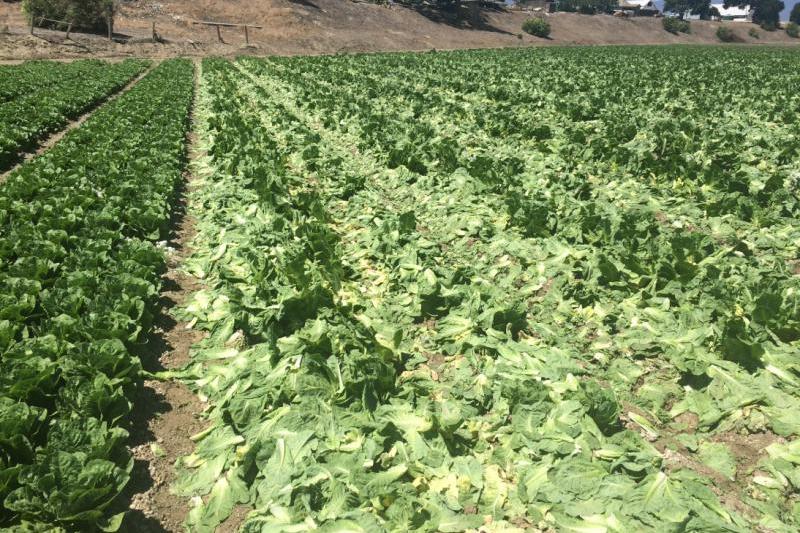
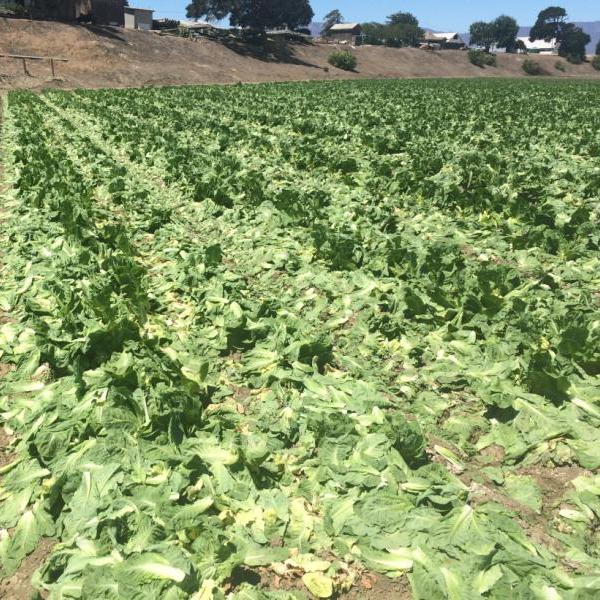
Image Credit: TechCrunch/FullHarvest.com
by Vikas Vij
Large technology companies are increasingly investing in AI and machine learning. According to a recent McKinsey report, in 2016, companies such as Google, Facebook and Baidu spent between $26 and $39 billion on AI research.
Microsoft has now announced the launch of AI for Earth, a new program dedicated to AI-based projects in the areas of agriculture, water, biodiversity and climate change. Led by Microsoft Chief Environmental Scientist Lucas Joppa, the program will donate up to $2 million in Microsoft tools, services and training to support environmental projects.
Many people worry about how AI may replace humans, and may help evade ethical and privacy oversights. The AI for Earth program will help Microsoft position itself as a responsible player in this space who wants to use AI for wider and sustainable benefits. The company is committed to adopting a highly principled approach to AI.
Microsoft said that the $2 million amount in AI for Earth will cover access to Azure and Microsoft’s data science “virtual machine”. It will also help organizations get access to more direct financial help in the form of grants.
Up to now there have been three projects that have received help from the AI for Earth initiative, ahead of Microsoft giving the program a stronger push. These include collaboration with Esri to work with five organizations focused on high-resolution land cover mapping, and building a lower-cost mapping tool to analyze, monitor and manage natural resources.
Microsoft has been working with the University of Pittsburgh, Johns Hopkins University, University of California Riverside, and Vanderbilt University on something it describes as “Project Premonition” to detect pathogens by using mosquitoes into “devices that collect data”, which is also being used for biodiversity research.
The third project is agricultural. In India, the company is working with the International Crops Research Institute for the Semi-Arid Tropics (ICRISAT), which is a UN Agency, and the local government in Andhra Pradesh, to enable data-driven farming for improving agricultural yield, reducing the cost of farming, and limiting the impact of agriculture on climate change.
Source: Tech Crunch
Image Credit: TechCrunch/FullHarvest.com
China Tells WTO: No More Garbage Imports
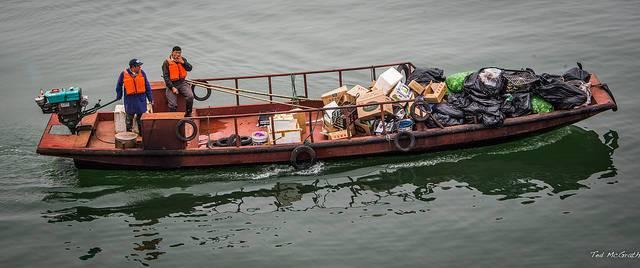

The logistics of how the world copes with its mounting waste were just thrown a wicked curve ball from the Pacific Rim. And the case for embracing a circular economy became stronger. Last week China announced that it would no longer accept many imports of garbage from other countries.
China recently informed the World Trade Organization (WTO) that wastes resulting from textiles and steelmaking are among a list of 24 types of garbage that will no longer be accepted at the country’s ports. In addition, waste plastic and paper are also no longer welcome.
“To protect China's environmental interests and people's health, we urgently adjust the imported solid wastes list, and forbid the import of solid wastes that are highly polluted,” the Chinese government wrote in a notification it sent to the WTO explaining the change in policy.
China’s readiness to accept this import from overseas helped build the country’s reputation as the world’s garbage collector. The massive waste diversion that sent ships across the Pacific with heaps of trash also made more than a few individuals rich. A decade ago, Zhang Yin, who recycled imported waste paper from the U.S. and churned it into packaging for China’s exports, was widely reported to be the country’s wealthiest citizen. China’s hunger for scrap material made plenty of other individuals millionaires, such as a waste metals dealer Adam Minter who was profiled in The Atlantic a few years ago.
Meanwhile, here in the U.S., opponents of U.S. trade policy could support their arguments by quoting the book Garbology by Edward Humes. In a 2012 interview with the Los Angeles Times promoting that book, Humes told a reporter:
“America's biggest export is trash -- the scrap paper and metal we throw away. The Chinese buy it, make products out of it, sell them back to us at enormous profit, and we turn it into trash again. America, the country that once made things for the world, is now China's trash compactor.”
But while China became the destination of much of the world’s unwanted waste, the world’s most populous country increasingly struggled with its own garbage problem. As mega-cities such as Beijing became even more crowded, available landfill space shrunk. Many civic leaders felt the only alternative was to build incineration plants, which certainly did not help the country’s overwhelming air pollution problem. “Provincial governments have decided that burning is the best way to deal with their trash,” wrote one Chinese correspondent in 2014 for the Australian Broadcasting Company. “Moreover, the smell is more easily dealt with than landfills.”
China is still coping with the environmental wreckage from its role as the world’s factory for over a generation. And the country’s leadership has realized over the past several years that the country’s relentless development has come with a high cost at many levels. Hence the country is undergoing a “green revolution,” and is embracing new clean technologies, a shift unthinkable just a few years ago. “After the global financial crisis, Chinese leaders recognized that the industry- and export-driven economic model that had delivered growth rates above 10 percent per year was unsustainable in the long run,” said Keith Johnson in a 2015 article for Foreign Policy.
Of course, saving face has its fair share within Chinese culture, business and diplomacy. Beset by its own environmental challenges, the country’s leadership has clearly grown tired of the world taking China for granted as a place to dump unwanted and untreatable waste. “We found that large amounts of dirty wastes or even hazardous wastes are mixed in the solid waste that can be used as raw materials. This polluted China's environment seriously,” concluded Chinese trade officials in a terse statement filed last week with the WTO.
Image credit: Ted McGrath/Flickr
The Health Impacts of Rush Hour Pollution


While your Facebook friends the past couple of weeks have been littering your feed with the shocking news that benzene in your car’s air conditioning is harmful – a claim, mind you, Snopes.com has debunked again and again since 2009 – those of us who sit in our cars during maddening rush hour commutes may have other worries besides distracted drivers and rising blood pressure.
A recent study published in the journal Atmospheric Environment suggests that the indoor pollution within our cars’ interiors may be much worse than previously believed.
Roby Greenwald, an assistant professor at Georgia State University, built a device designed to intake air at a rate akin to human lungs in order to measure indoor levels of air pollutants. The contraption was then fastened to passenger seats of over 30 cars, each of which completed at least 60 various rush hour commutes across metropolitan Atlanta. Whether commuters traveled along congested interstate highways or navigated through city streets to reach the city’s downtown, the eight researchers who worked together on this study found exposure to pollutants was higher than what has been assumed in previous studies.
In fact, estimates of particulate matter, or PM 2.5 – the microscopic particles that public health experts say can cause considerable damage to respiratory and circulation systems – was often twice as high as measurements from conventional traffic pollution sensors installed alongside roadways.
Several factors could explain these high levels of PM 2.5. Previous studies have shown that the composition of exhaust pollutants can change quickly once discharged from a vehicle. The intensity of pollutants on roadways can vary by the type of year and time of day. The bottom line is yes, the assumption that there are more pollutants surrounding us on the roadways during rush hour is true – but it is evident that beyond emissions, one of the larger problems is this pesky particulate matter. Various global health organizations have concluded that PM 2.5 can trigger various ailments such as heart disease, asthma and other respiratory diseases.
So what does this mean for the average John or Jane commuter?
In an interview discussing their research with Phys.org, the one of the study’s authors suggested these air pollution levels reflect the failures of urban planning. Another researcher chimed in, “Commuters should seriously be rethinking their driving habits."
Just what such a rethink should entail is a huge question for which city planners have limited answers. Despite some big-ticket public transportation projects on the drawing board, the evidence suggests more cities are cutting back on such systems as they see ridesharing companies such as Uber and Lyft picking up that slack.
And this spike in ridesharing throughout many cities, with San Francisco a prime example, indicates that traffic, and therefore emissions, will only become worse in the coming years. San Francisco’s civic leadership and citizens pride themselves on being one of the most “green” cities in the U.S. But residents and local officials have become more frustrated by gridlock on city streets; and a report this year suggested those two companies alone account for at least 20 percent of the city’s traffic. The result could be that money not spent on improved bus and rail systems will be spent on illnesses – while companies lose out because of lost productivity.
So even in sustainable San Francisco, more traffic means more pollution, and of course, more exposure to that particulate matter, one of the more serious long-term health threats to urban residents. But despite the return of citizens and companies to cities, public transportation systems either lack funds or political will. Furthermore, residents of these growing “smart cities” appreciate the semi-autonomy ridesharing offers them – after all, ridesharing is less crowded and more comfortable than a bus or train, and someone else is doing the driving. We will have to see a surge in air pollution-related illnesses before citizens and elected officials become serious about embracing public transport at a much wider scale.
Image credit: Gregor Smith/Flickr
Beef-Giant Canada Now Promoting a Plant-Based Diet


Canada is one of the world’s largest beef producers, with its 60,000 ranches and feedlots contributing CAD $33 billion (US$26.2 billion) to the country’s economy.
But that is not stopping the federal government in Ottawa from issuing new dietary guidelines in an effort to promote healthy eating. Gone are the recommendations to eat a certain amount from various “food groups.” Also eliminated, period, is any suggestion to consume dairy products. “Regular intake of water,” is what a summary of the eating guidelines advise Canadians.
Instead of portions or servings, Canadians are now encouraged to partake in a “regular intake” of foods including produce, whole grains and protein-rich foods, especially those that are plant-based. Unsaturated fats are all right; saturated fats (sorry, beef and coconut oil) are not included in this new picture. Conversely, “limited intake” is the mantra for foods high in sodium and saturated fat; for those processed foods high in sugar, “avoidance” is what is now preached. Interestingly enough, not once in the guidelines is the word “vegetarian” posted at all.
And in a conclusion that would send shivers down the spine of food industry leaders south of the border, Canadian public health officials are asking citizens to consider not only basing their eating choices on what is nutritious, but also to gauge these foods’ environmental benefits. “In general, diets higher in plant-based foods and lower in animal-based foods are associated with a lesser environmental impact, when compared to current diets high in sodium, sugars and saturated fat,” say the authors of these guidelines.
Furthermore, the new Canadian dietary recommendations posit that cultural diversity should help guide food choices. Touting the country’s 200-plus ethnic groups, the framework says, “Traditional foods and the harvesting of traditional foods are intrinsically linked to identity and culture, and contribute to overall health.”
Canada is not the first country to be aggressive in suggesting a shift away from animal-based protein. Last year, the Netherlands’ government adopted guidelines that encourage Dutch citizens to adopt more of a plant-based diet while limiting weekly meat consumption to less than 500 grams (17.6 ounces).
Meanwhile, Brazil has adopted nutritional recommendations similar to Canada’s new concept: forget any food guide; make fresh and minimally processed foods the foundation of one’s diet; rely on whole grains, legumes, fresh fruits and vegetables; and occasionally have chicken or fish. The Brazilian government also suggests limited consumption of processed foods such as pickles, cheese and bread. As for “ultra-processed foods” including sweetened breakfast cereals, soft drinks and instant noodles, the directive is to avoid. Finally, in a move to encourage communal eating, the guidelines say:
“Eat slowly and enjoy what you are eating, without engaging in another activity. Eat in clean, comfortable and quiet places, where there is no pressure to consume unlimited amounts of food. Whenever possible, eat in company, with family, friends, or colleagues: this increases the enjoyment of food and encourages eating regularly, attentively, and in appropriate environments. Share household activities that precede or succeed the consumption of meals.”
Supporters of Brazil’s rewrite of dietary guidelines insist that such measures are necessary for both public health and cultural reasons, a lesson apparently learned a continent away in Canada. “Like many middle-income countries, during the past few decades Brazil has whiplashed from an epidemic of malnutrition to one of obesity,” wrote Olga Khazan in The Atlantic last year in her narrative, which showcased how Brazilians’ shift from traditional fare to fast and processed foods caused the country’s obesity rate to skyrocket this century.
Do not expect the U.S. to fall in line any time soon. Although the “Choose My Plate” initiative is a big improvement in the carbohydrate-heavy and diabetes-inducing food pyramid of yesterday, critics say the U.S. Department of Agriculture (USDA) is still intimidated by the lobbying prowess of U.S. agribusiness interests.
Watch for more countries to adopt similar guidelines as governments enumerate the costs associated with public health problems such as obesity, compared to acquiescing to the demands of powerful food companies. Winners will be food technology companies like Beyond Meat and Impossible Foods, which become more mainstream and are not far off from finding new markets overseas. Meanwhile, the global meat industry, despite claims that it is becoming more sustainable and is working to fight deforestation, may find that day of “peak meat” – not to mention a budding laboratory meat sector - will soon throw this sector even more curve balls.
Image credit: Nancy Regan/Flickr
'Fossil Fuels are Dead' Says Coal Transport Magnate


Coal has been the driving force behind the U.S. rail system for more than a century. The stories of locomotives chugging along as workers fed shovels full of coal into the burners may be a thing of the past, but that chunky byproduct has still been largely responsible for keeping the American rail system afloat. According to the American Association of Railroads, coal amounted to almost a third of gross tonnage carried by U.S. rail in 2016. It also amounted to more than 13 percent of rail revenue. And while that may not sound like a large percentage, 70 percent of the coal used by energy companies that year arrived by rail.
Understandably, the shrinking demand for coal in energy production has translated to less revenue for rail companies as well. By 2015, the U.S. Energy Information Administration reported, coal consumption had dropped 29 percent, down almost a third since its peak in 2007.
That continuing decline is not only impacting revenues for rail companies like BNSF Rail and Union Pacific, but it is forcing companies to rethink how America's oldest automated form of transport can keep running.
Last week CSX Rail's CEO made an announcement that put this shift into stark relief: "Fossil fuels are dead," said Hunter Harrison, who has been charged with the difficult task of increasing the efficiency of the country's third-largest rail system. Harrison, who has built his reputation on revitalizing both U.S. and Canadian rail companies, is driven by what he calls "precision railroading," in which trains run on a system managed by a centralized hub, rather than by the rail yard. It also means a lot less leeway for expenditures that simply don't make sense -- like buying rail cars that fit a niche, declining, market.
His declaration that he'll stop buying coal cars because "coal is not a long-term issue" may have been shocking to investors, but Harrison isn't alone in his opinion.
[As] coal usage in the U.S. power sector declines, so will the number of trains needed to transport it," explains Tali Trigg in her Scientific American blog post. "[That's] a lot of trains, often going back empty once the coal has been delivered."
"Stranded asset risk will trump rhetoric" when it comes to "ploughing money into U.S. coal extraction" write Bloomberg new energy experts. They point out that the UK, whose energy industry, like that of the U.S. was forged on the mining and sale of coal now represents a measly 4 percent of energy production in the British Isles. That's remarkable, given the industry's iron-clad grip on the UK's economy as late as the 1980s and 90s. But across the world, in countries that have relied upon fossil fuel extraction and mining, a new attitude about what can drive rail is taking shape. Even when it comes to transportation in the country's biggest commercial center, where Harrison first made his prediction last year.
Fossil fuels are "probably dead," Harrison told listeners at a J.P. Morgan Transportation Conference in New York in March 2016.
“I’m not maybe as green as I should be, but I happen to think the climate is changing [and] they’re not going to fool me anymore,”
Flickr images: Emmett Tullos; Dan Grogan